What a changing climate means for disease vectors: The effects of temperature on Aedes aegypti and Aedes albopictus
Published in Earth & Environment, Microbiology, and Zoology & Veterinary Science
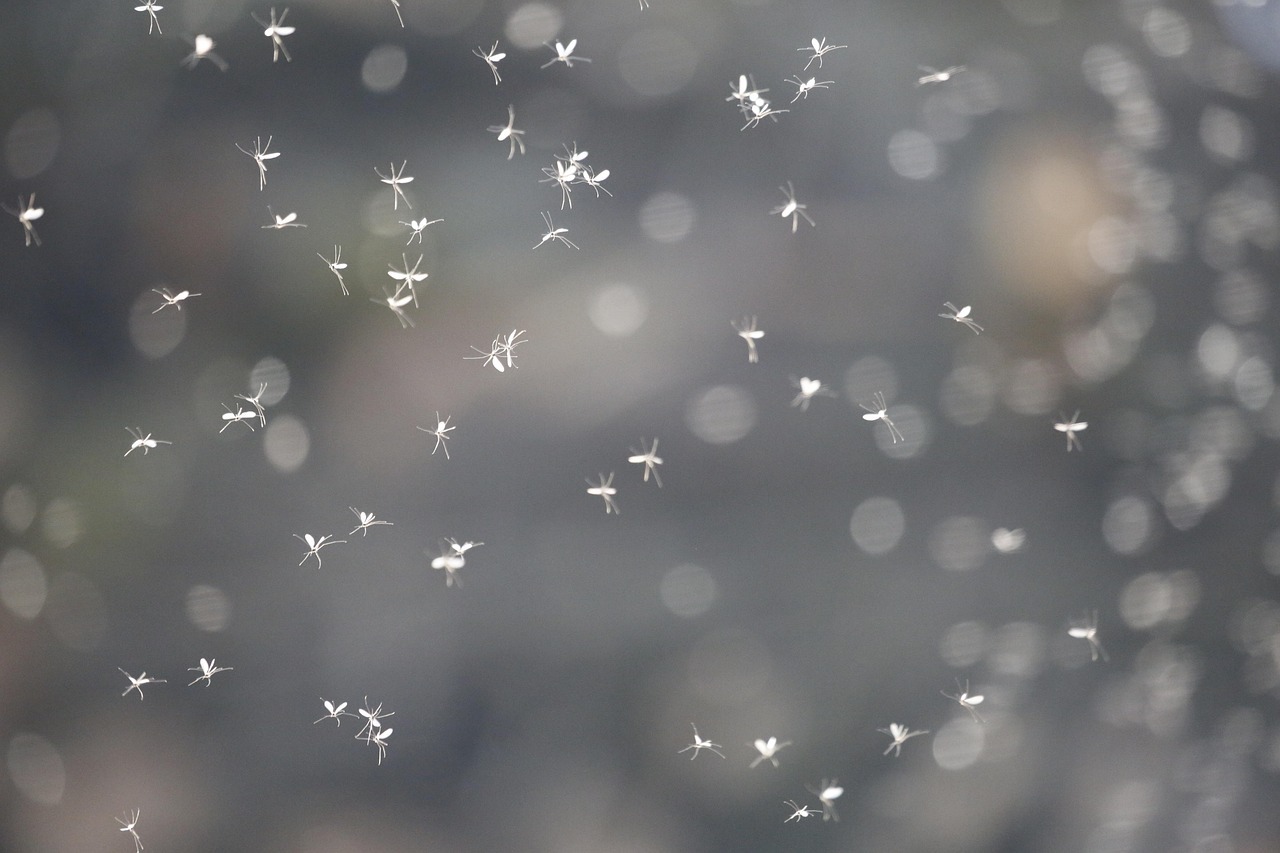
Vector-borne diseases are a major public health challenge globally, with 82% of the population at risk of at least one vector-borne disease, but typically they affect tropical and subtropical regions disproportionately. Arthropods transmit a range of diseases to humans, from viruses (termed arboviruses if transmitted by arthropods to humans) such as dengue fever, West Nile virus, yellow fever and chikungunya; bacterial infections like Lyme disease and leishmaniasis, or parasitic infections like malaria and Chagas disease.
Climate change is causing rising annual temperatures, shifting patterns of precipitation, increased seasonal temperature variation, and more frequent extreme weather events. These climatic changes are reshaping the behaviour and physiology of arthropod vectors, altering the times they are active, extending their seasonal activity, and most alarmingly expanding their suitable ranges. For example, tick-borne pathogens in Western Europe are seeing a shift from seasonal to year-round transmission, and in the last few decades West Nile Virus has spread throughout Europe – with models predicting the disease will reach the UK in the latter half of the 21st century.
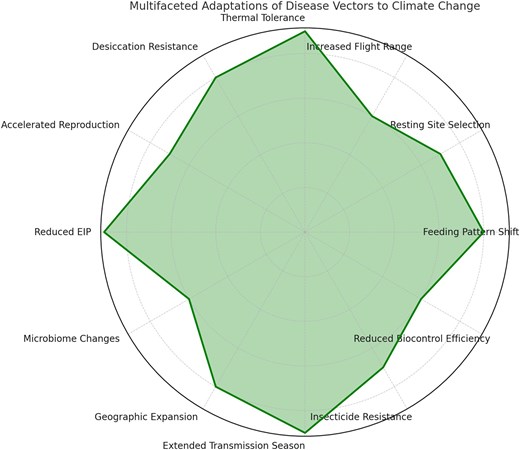
consequences, and control strategies.
E Abbasi, Climate Change and Vector-Borne Disease Transmission: The Role of Insect
Behavioral and Physiological Adaptations, Integrative Organismal Biology, Volume 7, Issue 1, 2025
Mosquitoes are one of the greatest public health concerns as they are major vectors for many arboviruses. Two species in the Aedes genus, Aedes aegypti and Aedes albopictus, are vectors of viruses like dengue, zika, yellow fever, and chikungunya, and are found on every continent (other than Antarctica). Mosquitoes are known for having phenotypic plasticity, and so changing environmental conditions caused by climate change are likely to alter feeding behaviour, habitat suitability, and physiological traits like growth and development. We know climate change is causing shifts in disease epidemiology but understanding how changes to factors like temperature and humidity affect the distribution, diversity and behaviour of specific disease vectors is crucial for risk prediction and management.
Doeurk and colleagues investigated the effect of temperature on various life history traits in populations of Aedes aegypti and Aedes albopictus in Cambodia. Using a climatic chamber with a temperature range of 15°C - 40°C at 5°C increments, the team assessed the hatching rate, larval survival, development duration, temperature thresholds, and feeding rate, among other traits. The study found that temperature significantly influenced all the life history traits studied in both species.
Some of the main impacts of temperature on the mosquito’s physiology that the study highlighted are:
- The highest egg hatching rate for Aedes aegypti was 25°C, and for Aedes albopictus was 20°C.
- The quickest development was observed at 35°C in Aedes aegypti and 30°C in Aedes albopictus.
- The optimal temperature for female survival was estimated to be 27.06°C for Aedes aegypti and 24.54°C for Aedes albopictus.
- The highest feeding rate for Aedes aegypti was observed at 30°C and for Aedes albopictus was 25°C.
Increasing temperatures and rainfall are predicted to alter the distribution of disease vectors, and because of mosquitoes physiological and behavioural adaptability, we can assume that they can and will adapt to environmental changes caused by climate change. Doeurk and colleagues found that increasing temperatures accelerated development, however it also increased mortality rate. The species both had a broad thermal tolerance but had an upper limit of 40 degrees, with the optimal temperature range to support reproduction and population growth likely 25-30°C.
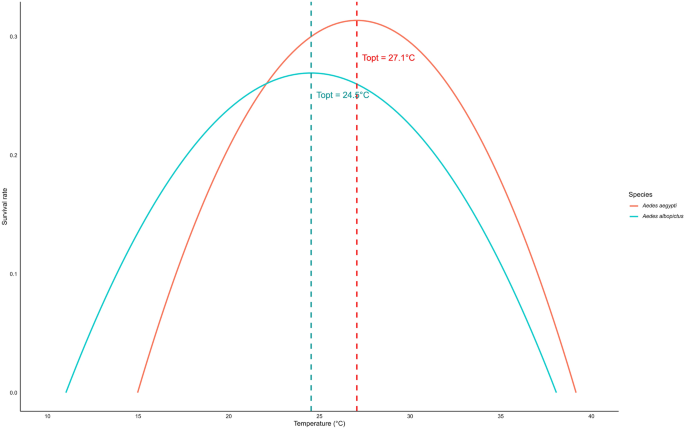
Doeurk, B., Leng, S., Long, Z. et al. Impact of temperature on survival, development and longevity of Aedes
aegypti and Aedes albopictus (Diptera: Culicidae) in Phnom Penh, Cambodia Parasites Vectors 18, 362 (2025).
Temperatures in temperate regions of Europe and North America are rising to converge with Aedes albopictus’s optimal temperature of 24.54°C, enabling the species to expand its range into these areas. As temperatures rise, Aedes albopictus and other disease vectors with similar optimal temperatures are likely to exhibit range expansion to latitudes and altitudes not previously inhabited by these species. Aedes aegypti has a close association with urban environments and a tendency to use artificial breeding sites like water storage and plant pots. This coupled with its high optimal temperature means the species could likely withstand rising temperatures associated with climate change, as artificial breeding sites can act as microclimates that could ensure the viability of the species – even if temperatures rise to reach their thermal threshold.
Climate change has already led to changes in the temporal and spatial distribution of disease vectors. Research like that conducted by Doeurk and colleagues is vital to discover how different species’ life history traits may be affected by changes in temperature. The results they reported could be used to parametrize mathematical models of mosquito population dynamics, which could assist with forecasting future disease transmission risk based on various climate change scenarios. Further research is also needed to uncover the effects that other environmental changes like varying humidity levels and precipitation may have on these species, and how these climatic changes will affect other disease vectors, so that we can improve disease risk prediction and mitigation.
Follow the Topic
-
Parasites & Vectors

This journal publishes articles on the biology of parasites, parasitic diseases, intermediate hosts, vectors and vector-borne pathogens.
-
BugBitten

A blog for the parasitology and vector biology community.
Related Collections
With Collections, you can get published faster and increase your visibility.
Artificial intelligence, parasites, and parasitic diseases
As discussed in this editorial by Dantas-Torres, this collection is dedicated to articles reporting the use of AI in parasitology research. We particularly welcome articles dealing with parasitic disease diagnosis, parasite and vector identification as well as those reporting the prospection of drugs and vaccine candidates.
This collection will serve as a platform for authors to publish their research that employs AI and deep learning methods for solving research questions in the fields of parasitology and tropical medicine.
Publishing Model: Open Access
Deadline: Dec 31, 2025
Climate Monitoring and Decision Support Framework for Sand Fly-borne Diseases Detection and Mitigation – The CLIMOS Project
Articles published in the collection have already gone through the systematic peer review process of the journal.
Publishing Model: Open Access
Deadline: Jan 31, 2026
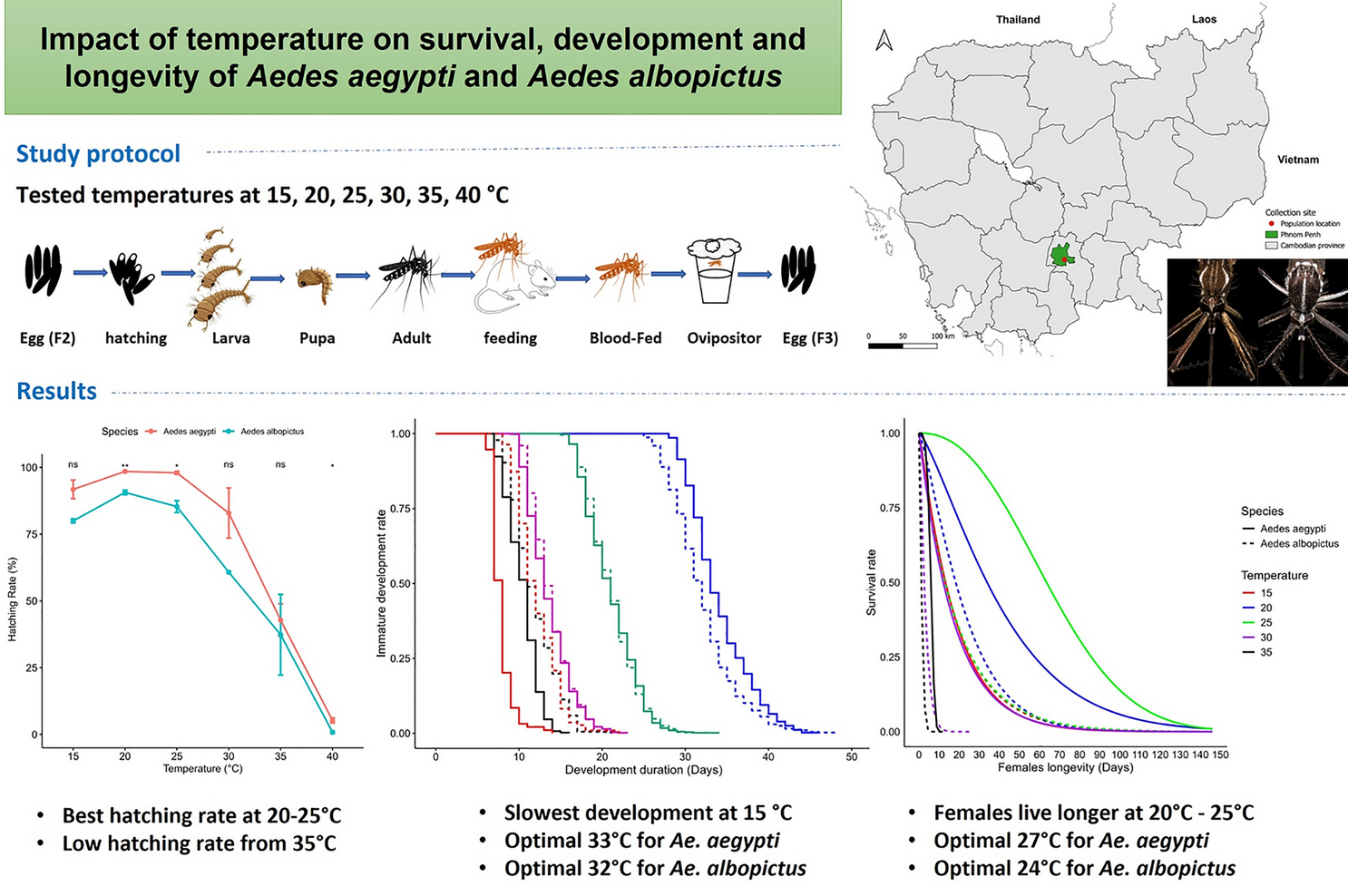


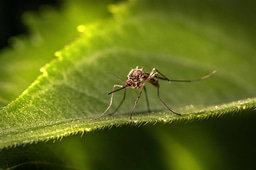


Please sign in or register for FREE
If you are a registered user on Research Communities by Springer Nature, please sign in
great blog
Thanks Srimathy!